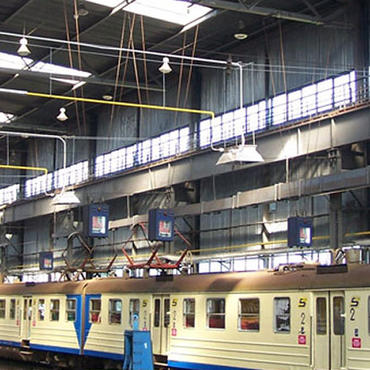Space Heating Principals
The transfer of heat from a warm object to a cooler one takes place by one of three methods or a combination thereof. These methods are: conduction, convection, or radiation. Solaronics specializes in infrared radiation heating products and systems. As experts on the subject we are happy to explain the science behind our products.
Conduction
Conduction of heat occurs when faster moving molecules pass on some of their energy to adjacent molecules which are slower-moving, i.e. at a lower temperature. This may occur within a solid or between a solid and an adjacent fluid such as air. In any heated building or enclosure, heat is conducted or transmitted from the warm inside air to the inside surfaces, then through the wall or roof, to the cooler outside surface and on to the outside air.
Convection
Convection transfer of heat involves the mixing of warm and cool particles of fluid. The mixing may come as a result of density differences due to temperature differences which is natural convection, or, if the mixing is produced by mechanical means, forced convection. In a heated building, convection losses occur when cold outside air enters a building, mixes with the warmer inside air, and then exits through an exhaust such as open doors, cracks, etc.
Radiation
Solaronic's specialty is radiation heat transfer, specifically radiation infrared heating. Heat transfer by radiation differs from the transfer of heat by conduction or convection in that it does not need matter to accomplish the transfer. Radiated heat is usually termed infrared, this is just one of the several forms of radiation.
Infrared is transmitted at the speed of light, 186,000 miles per second, in a straight line with minimal loss to the air. It can be aimed, reflected or focused by materials that have a highly reflective surface, such as aluminum casings on many of our tube heaters. When infrared strikes an absorptive object such as concrete, wood, water, paint, skin, or clothing it is converted into heat at the surface.The surrounding air is then warmed by conduction and convection.
The best example of this transfer of heat is from the sun to the earth without loss of heat to outer space. Radiation or infrared energy is emitted by all matter that is above absolute zero (-460°F). The net transfer of heat is from one object to a cooler object. Warm objects, including people inside a heated building lose or radiate heat to the cooler inside surfaces of the walls. The walls conduct heat to the outside surface and then lose heat by radiation, conduction and convection to the outside.
How Infrared Works
The amount of radiation produced by a perfect radiator is expressed by the Stephan-Boltzman Law, where:
- Q = σ T⁴
- Q = Quantity of heat radiated per ft².
- σ = Stephan-Boltzman constant.
T = Absolute temperature (°F + 460°).
For ordinary objects, non-perfect radiators, Q is reduced by multiplication of the object’s emissive power (always less than one). Thus, at normal temperatures the amount of infrared radiation produced by an object is relatively low, but as the temperature is increased, radiation increases significantly. For example: An object at 80°F (540° absolute temperature) with an emissive power of 0.85 will produce 124 BTUH/ft2. When its absolute temperature is doubled to 1080° its output is increased sixteen fold to 1,984 BTUH/ft2. If its absolute temperature is quadrupled to 2160° its output increases two hundred and fifty six fold to 31,744 BTUH/ft2.



